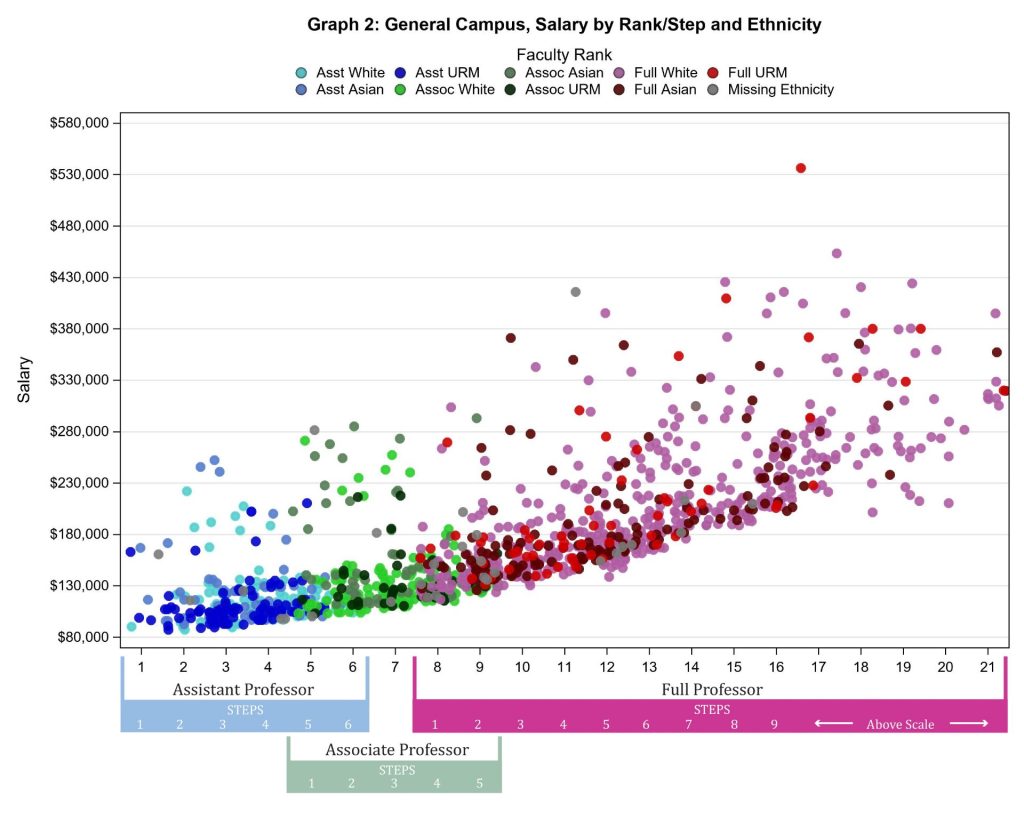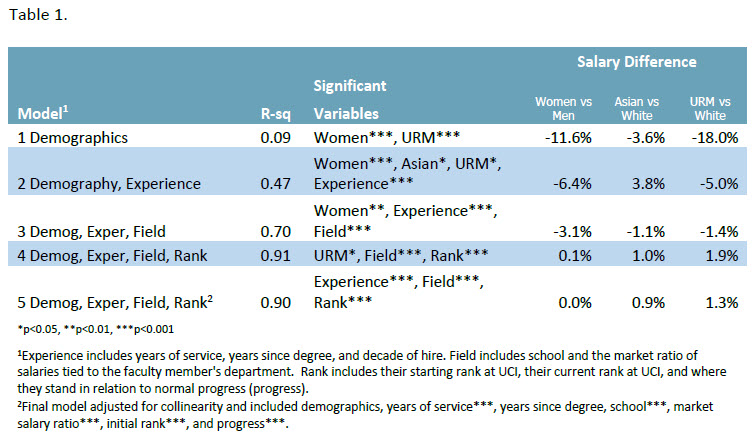The salary data for all Ladder Rank Faculty on the General Campus are plotted below.
As a function of rank, step, and gender:

As a function of rank, step, and ethnicity:

Multiple Linear Regression Analysis
When these data are evaluated with the simplest model that includes only demographic variables the result indicates that, compared to their colleagues who are male, women earn salaries that are 11.6% lower, Asian faculty 3.6% lower, and URM faculty 18.0% lower. However, only 9% of the salary variation is explained by the model (Table 1). As additional explanatory variables are added to the model, salary differences diminish to approximately 1% or less between women, Asian, and URM faculty when compared to white men; and the percentage of salary variation explained by the model increases to 90%. None of the demographic variables are statistically significant predictors of salary. At the campus level, there is little evidence of systematic salary inequity associated with gender and/or ethnicity. The final model predicted salaries within plus or minus 23.1%. (For technically-minded readers, the RMSE on the log base 10 scale is 0.045.)

Progression Analysis
The progression data for all General Campus Ladder Rank Faculty, are plotted below. Normative progression is defined in the Progression Matrix.
Progress by gender:

Progress by ethnicity:

Progress Rate Analysis
There has been debate on whether rank should be included in predicting salary. In previous studies, rank is generally included in predictive modeling unless there is evidence of bias against one group progressing through the ranks. Cursory t-tests on the rate of progression (excluding the School of Law) indicate that women faculty and URM faculty progressed at a rate that is not as fast as that of White men. See note to Table 2 for additional analysis. Normative progression is defined in the Progression Matrix.

School Level
Analyses at the school level yield a range of results. When controlling for experience, department within the school, and rank and progress, salary differences are, for the most part, not significantly different between gender or ethnic/racial groups, but there are exceptions. A few schools show statistically significant higher salaries for minority groups relative to white faculty. There are two schools with statistically significant lower salaries for women relative to men. Known limitations to the current analysis are that data on “Stop the Clock” are not readily available. Similarly, the impact of outside offers was not addressed.
General Campus Summary
In summary, we found no evidence of systemic disparity in pay associated with gender and/or ethnicity at the campus level after adjusting for experience, discipline, and rank. Though the study showed that women and URM faculty progressed at a rate slower than White male faculty, this difference was not significant after adjusting for experience, discipline, and initial rank.